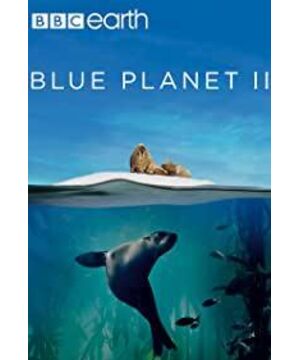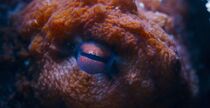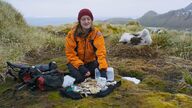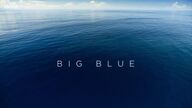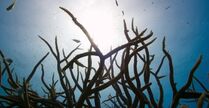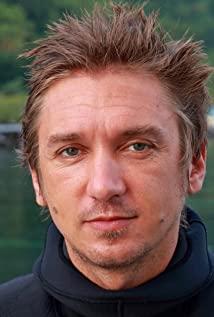The child has been obsessed with "Little Columns Under the Sea" for half a year, and bought some animation peripherals. After watching the aquarium, he planned to buy him some books of the real marine encyclopedia, so he found the books and documentaries of "Blue Planet 2".
Tencent video can be played and watched on TV. The first episode was amazing, and the picture quality was very clear, just like those dazzling display pictures I saw in the TV sales area of the mall.
The shooting angle is also very good. For example, when shooting dolphins surfing, the turquoise, light blue sea water and the waves with little bits of gold rushed in front of them, making people sigh "Oh, it's so beautiful!"
Of course, in addition to the stunning beauty brought by the picture quality effect. Deeper understanding and awareness of the ocean. I have heard the names and characteristics of marine creatures such as the Galapagos Islands, Mariana Trench, whale sharks, humpback whales, red rock crabs, sailfish, swordfish, etc. from the mouths of my children every day. Watching it vividly from the TV and learning about their real appearance and life is a very interesting experience for me and children:
The child will be complacent: "Look, I said it's a killer whale~" I will echo: "It's true, you are really our little marine expert!"
In addition, the production team of "Little Column under the Sea" is also good, and the knowledge of the ocean is still relatively reliable. Is it also influenced by "Blue Planet 2"?
Finally, thinking about people and the ocean, I think this is what the documentary finally wants to evoke through beautiful images and fresh perspectives.
It's sad to see some footage, such as:
The mother whale holds the dead child's body in her mouth and refuses to put it down;
Tears in the eyes of leatherback turtles when they lay eggs;
Beautiful coral reefs lose their original bright colors;
Seeing elderly wandering albatross parents hugging in the wind, the chicks collected by the researchers did not digest the plastic and gloves they spit out;
Killer whales struggling in fishing nets;
The warming climate has caused the polar ice to break and melt, and the walrus mothers are looking for suitable resting places for their children.
...
The child is trying to avoid these cruel scenes. In the last episode, the researchers lifted a dead baby dolphin. The child said: It is so pitiful, why did it die?
I struggled to explain:
Plastics will decompose into tiny particles in the sea, some small plankton such as shrimp will eat these harmful substances as food, small fish and crabs will eat these small shrimps, octopus and other big fish will eat crabs and small fish, Dolphins and whales will eat bigger fish, but the toxic substances will not be digested, and will only accumulate in the big fish layer by layer. The baby dolphins eat the mother's milk and accumulate a lot of toxic substances, so they die.
Why do garbage such as plastic bags end up in the sea? Our country's garbage classification is not done well. Plastic bottles, food waste, and newspapers are all thrown away together. If it is not handled properly, they are either burned to produce carbon dioxide, or buried in the soil or dumped into the sea, which will pollute the environment.
So we try to use less garbage bags, plastic bottles and packaging cartons are collected and recycled by selling waste.
After thinking about it, I added:
You see a great white shark eats once and probably won't eat for the next year, and so do whales. Each of us should not be too greedy, try to restrain ourselves, and only buy what is necessary, so as not to waste too much, and not to affect other creatures on the earth too much.
Just like the song "Happy Face" sings: "The teacher said that if the desire can be less, the happiness will be more."
I don't know how much a child who has not yet reached the age of 5 understands. He said this to him, but also to himself.
View more about Blue Planet II reviews


